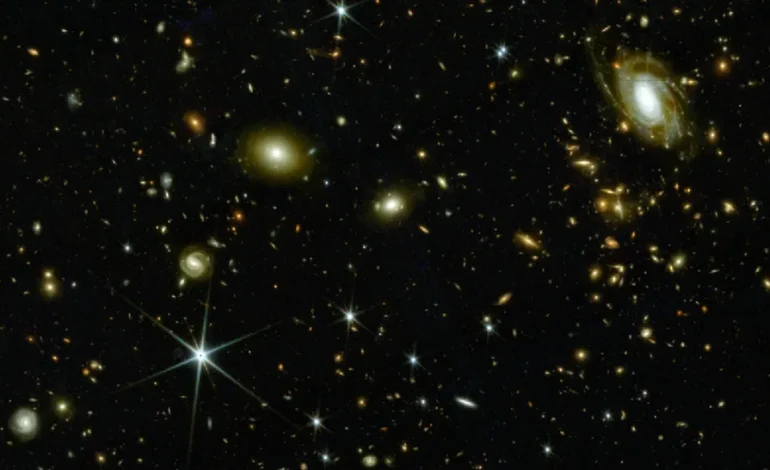Astronomers using the James Webb Space Telescope (JWST) have produced the largest map of the early universe ever assembled, offering a sweeping cosmic view that captures nearly 800,000 galaxies—many of which existed in the first billion years after the Big Bang, Space.com reports.
This expansive dataset stems from COSMOS-Web, the most extensive observing campaign conducted by JWST in its inaugural year.
The survey covered a patch of sky equal to the width of three full moons placed side by side, marking the widest observational field the telescope has scanned so far. The resulting image was stitched together from more than 10,000 individual exposures. Alongside the image, researchers released a public, interactive catalog containing detailed data on each galaxy’s properties.
“I don’t know if the James Webb Space Telescope will ever cover an area of this size again,” said Jeyhan Kartaltepe, lead researcher of COSMOS-Web and an astrophysicist at the Rochester Institute of Technology. “I think it’ll be a good reference and a good data set that people will use for many years.”
The COSMOS-Web collaboration consists of nearly 50 scientists from institutions around the globe. Granted over 200 hours of telescope time, the team aimed for breadth over depth—contrasting with many JWST studies that focus on narrow, deep fields. As a result, the project detected about 10 times more galaxies from early cosmic epochs than expected.
Some of these ancient galaxies had remained invisible in other wavelengths until now.
“It was incredible to reveal galaxies that were previously invisible… and very gratifying to finally see them appear on our computers,” said Maximilien Franco, a postdoctoral astrophysicist at the University of Hertfordshire.
One major objective of the project is to better understand the Reionization Era—an early period in cosmic history, more than 13 billion years ago, when light from the first stars and galaxies began to pierce through the hydrogen fog that once filled the universe. The team is using early galaxies to map out “reionization bubbles,” although this work is still ongoing.
The JWST’s broad-field imagery also enables scientists to analyze how galaxies interact with their environments. By comparing galaxies in isolation with those in denser regions, researchers hope to learn more about how structure and star formation have evolved over billions of years.
In addition to the image and catalog, the COSMOS-Web team has released several scientific studies based on their findings. These include a paper analyzing the most luminous galaxies in the dataset and how their internal structures have changed over time, as well as a study using machine learning to estimate the physical properties of distant galaxies. The researchers also developed a new technique for measuring brightness more accurately by modeling how light is distributed across galaxies, allowing more precise comparisons between space- and ground-based data.
The process of assembling the final map required meticulous image alignment and correction of unexpected artifacts, such as noise patterns, that came with operating a new telescope. Despite these technical challenges, Kartaltepe noted that JWST exceeded expectations in its ability to detect faint, distant galaxies.
“There’s still so much we don’t know,” Kartaltepe said. “But the catalog has incredible potential.”










The latest news in your social feeds
Subscribe to our social media platforms to stay tuned